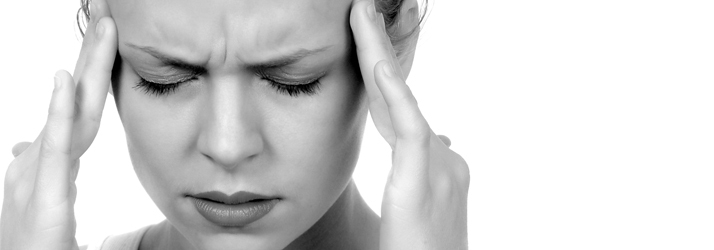4 Phases of Migraines and the Symptoms Stage by Stage in Williamsburg
4 Phases of Migraines and the Symptoms Stage by Stage IN Williamsburg

About 15% of the world’s population suffers from migraines. Migraines are a neurological disorder that causes persistent headaches ranging from moderate to severe. On average, people begin to get them during adolescence, and they worsen in middle age. Migraines are a longstanding condition that have been reported as far back as 1500 BCE.
Ask any Williamsburg migraine chiropractor you know and they will tell you that contrary to popular belief, migraines are not just ordinary headaches. A migraine may or may feature a headache. Although an intense headache is a primary symptom, a migraine includes multiple other indicators including:
- Throbbing pain that typically affects one side of the head
- Nausea and vomiting
- Sensitivity to sounds, lights, or odors
- Fatigue and dizziness
- Attacks that last from 2 to 72 hours
- Aura or temporary neurological disruptions that occur before the headache
THESE Williamsburg PEOPLE ARE AT HIGHER RISK OF DEVELOPING MIGRAINES
Some people are more likely to get migraines. Various factors such as sex, age, genetics, hormones, and other conditions play a role in migraine development. If you fit into any of the following categories, you are more prone to getting migraines:
- Women
- If one or both your parents have migraines
- If you are pregnant
- If you are in your puberty
- If you are between 15 and 55 years old
- If you have a history of anxiety, depression, high blood pressure, stroke or epilepsy
- If you have had a neck or spine injury
MIGRAINE PHASES AND THEIR SYMPTOMS
Migraine attacks can move through four possible phases, although not all four are always experienced. Each stage differs in symptoms, duration, and severity. Let’s have a closer look at each of the phases to help you better understand the signs that may be displayed before, during, and after a migraine attack. If you are suffering from migraines yourself, this should also help you prepare and get through the distressing episode.
Prodrome Phase
As many as 60% of migraine sufferers experience prodromal or premonitory symptoms linked with this phase. These symptoms can be felt anywhere from two hours to two days before the onset of a migraine. Symptoms of this phase, which may or may not include an aura, can consist of several things:
- Moodiness
- Cravings for certain foods
- Depression or euphoria
- Sensitivity to odors or noises
- Stiff neck muscles
- Diarrhea or constipation
Aura Phase
Experienced by 25% of migraine sufferers, an aura is a set of specific neurological disruptions that take place slowly over a few minutes and usually last around an hour before the actual headache. Symptoms are categorized into three areas:
- Visual
- Sensory
- Motor
About 90% of people with migraines experience a visual aura, making it the most common among the three types. Visual auras can be described as seeing or experiencing the following:
- Flickering lights in your visual field that restricts your ability to read or drive
- A visual disturbance that begins near the center of vision and spreads out
- Zigzag lines in your peripheral vision that look like walls of a castle
- Black and white or rainbow colors
- Blurry vision or temporary vision loss
Meanwhile, 10% of migraine sufferers complain of sensory auras. The symptoms may last for only a few minutes or up to an hour, and include the following:
- A pins-and-needles sensation that starts in the hands and spreads to the nose or mouth
- Numbness or tingling
- Speech or language issues
- Feeling as if your or your environment is spinning
- Auditory hallucinations or delusions
- Motor problems and weakness
Pain Phase
The headache is commonly localized on one side and ranges from moderate to severe in intensity. The pain can also affect both sides and go along with neck pain in 40% of migraine cases. Bilateral pain is more common in those who do not experience an aura. Any physical activity may worsen the headache. That’s why it is recommended to have a rest during this phase. Other symptoms include those listed below:
- Nausea and vomiting
- Fatigue
- Sensitivity to light, sound, and odors
- Irritability
Postdrome Phase
During this phase, the headache has already subsided, but it can still feel upsetting. Many people report feeling “hungover” as the symptoms are somewhat like what anyone experiences after a long night of drinking. Some of the symptoms are as follows:
- Fatigue
- Cognitive issues
- Weakness
- Mood changes
- Gastrointestinal problems
While some people feel delighted and rested, others suffer from depression and sickness. This may change for the same person at different times.
CONVENTIONAL TREATMENT FOR MIGRAINES
For migraine relief, family doctors often recommend medications to their patients starting with over-the-counter medications like ibuprofen or Tylenol (acetaminophen). They may also prescribe antiemetics to treat nausea and vomiting that go along with migraines. Abortive treatments like triptans or ergotamines may also work. Other popular medications to prevent episodic migraines are valproate, topiramate, and metoprolol.
Here’s the catch: although these medications can provide short relief to migraines, they do not address the root cause of migraines. Migraines will most likely return another day if the underlying cause is ignored.
ADDRESSING THE ROOT CAUSE OF MIGRAINES ONCE AND FOR ALL
Studies have revealed that the underlying source of migraines is sometimes a misalignment in the bones of the upper cervical spine, particularly the C1 and C2 vertebrae. Most migraine sufferers report having a minor trauma or injury in the past that affected their head, neck, or back. Car accidents, sports accidents, or simply tripping and falling were the common causes, which resulted in misalignments in the upper cervical spine. A misalignment in this area can put the brainstem under stress.
When the brainstem gets pressured, it can begin sending incorrect signals to and from the brain. This can lead to a migraine. The nerves and blood vessels in the neck can also be negatively impacted, another factor driving migraines.
Here at Via Vitae Chiropractic in Williamsburg, Virginia, we address the root cause of migraines through upper cervical chiropractic care. Our gentle yet precise method helps the bones of the neck to realign by a natural technique. We do not force or crack the spine or neck. This results in a longer-lasting adjustment. Most of our migraine patients reap the benefits of our practice in as little as one or two visits.
Suffer no more from migraines. Visit our Williamsburg, VA migraine relief clinic and have yourself taken care of by a chiropractic specialist.
Monday
10:00am - 1:00pm
3:00pm - 7:00pm
Tuesday
9:00am - 11:00am
3:00pm - 6:30pm
Wednesday
10:00am - 1:00pm
3:00pm - 7:00pm
Thursday
10:00am - 1:00pm
3:30pm - 6:30pm
Friday
Closed
Saturday & Sunday
Closed
Via Vitae Chiropractic
4511 John Tyler Highway Suite B
Williamsburg, VA 23185
P: (757) 208-7108
F: (757) 345-6936


